- Home
- Robert J. Mrazek
A Dawn Like Thunder Page 3
A Dawn Like Thunder Read online
Page 3
Thanks to his constant hectoring, Waldron’s squadron was the first one chosen to be equipped with the Navy’s brand-new torpedo plane, the Grumman Avenger, manufactured in Bethpage, New York.
With its fourteen-cylinder, air-cooled radial engine, the Avenger was almost as fast as a Wildcat fighter and had steel armor plating to protect the crew, along with self-sealing fuel tanks that virtually swallowed bullets, and a swiveling turret for the fifty-caliber machine gun located in the center of the fuselage. It carried a crew of three, including the pilot, who could fire a machine gun from the nose, the turret gunner in the center, and a radioman who could fire a third machine gun from underneath the plane’s tail section.
When the Hornet departed for the Pacific back in March, the first batch of Avengers was just coming off the Grumman assembly line. Until the new planes arrived out in the Pacific, Waldron’s pilots would have to fly the Devastators.
Back in February, the Hornet had been chosen to launch the first air attack on Tokyo. In San Francisco, sixteen B-25 Army Air Force bombers were lowered by crane onto the Hornet’s flight deck. The daring raid was strictly an Army show, led by Lieutenant Colonel James Doolittle. Before the raid, no one was sure that a fully loaded B-25 bomber could be launched successfully off an aircraft carrier, but Doolittle had trained his crews to do just that. After dropping their bombs in Japan, his bombers would attempt to fly on to China, where they would land at air bases in Allied hands.
And they had done their job. On April 18, 1942, the sixteen B-25s had taken off from the Hornet in the face of gale-force winds and had hit their targets. After the planes were launched from the Hornet, the carrier turned around and headed back to Pearl Harbor.
In early May, the first major Pacific naval battle took place between American and Japanese forces in the Coral Sea, southwest of the Solomon Islands. The Hornet did not participate in the action, which led to a Japanese tactical victory. The American carrier Lexington was sunk along with two other ships, while the Japanese lost the light carrier Shoho.
Waldron was desperate to receive his new Avengers before the next major battle took place. When the planes arrived at Pearl Harbor aboard the transport ship, he was planning to work his senior pilots around the clock to qualify them. If there wasn’t time for it, the younger pilots who had trained on them back at Norfolk would fly in combat. Either way, Waldron planned to lead them.
But they hadn’t come in time.
Signaling that calisthenics were over, Owens sent the pilots off on a full lap around the perimeter of the huge flight deck, and the Skipper headed down to the officers’ wardroom for his daily powwow over coffee with Commander Ed Creehan.
Ed Creehan was the stocky, heavy-jawed engineer officer on the Hornet, and a close pal of Waldron’s from their Annapolis days. He was also a member of the inner circle of the Hornet’s captain, Marc “Pete” Mitscher, and he often picked up the latest scuttlebutt before anyone else. Waldron could share a confidence with him and know that the information wouldn’t travel further.
Waldron joined Creehan in the carrier’s low-ceilinged wardroom, where the ship’s officers ate their meals and gathered for meetings and briefings. It ran the entire breadth of the ship, with parallel rows of white linen–covered tables laid with flatware bearing the Hornet crest.
With the Midway battle just a few days away, the Hornet’s officers were excited about the chance to put a serious dent in the Japanese fleet and make up for the loss of the Lexington a month earlier. The Hornet had not arrived in time to participate in the Coral Sea battle. Midway would be her first test.
That morning, the Hornet air group leaders would receive their first intelligence briefing from Lieutenant Steve Jurika, the senior intelligence officer aboard the Hornet. He would provide the latest information on the Japanese intentions at Midway, as well as Admiral Nimitz’s proposed strategy for blocking them. After that, the Hornet’s air group commander, Stanhope Cotton Ring, would outline his own plans for attacking the Japanese carriers.
Up on deck, the morning’s gunnery practice was inaugurated with the concussive blast of the ship’s five-inch guns. The noise reverberated through the ship like successive hammer blows. A few minutes later, the cannon salvos were followed by the stuttering racket of antiaircraft machine gun fire.
Their coffee break over, Ed Creehan left to resume his engineering duties, and Waldron joined the group assembling for the briefing by Jurika and the intelligence staff. Like John Waldron, the other three air squadron commanders were career naval officers and Annapolis men. They were Lieutenant Commander Samuel “Pat” Mitchell, who led the Hornet’s fighter squadron, and Lieutenant Commanders Walter Rodee and Robert “Ruff” Johnson, who led the two dive-bombing squadrons.
The Hornet’s air group commander, Stanhope Cotton Ring, had graduated from Annapolis one year ahead of Waldron in 1923. The two men came from different worlds. They were very different men.
Unlike the hard-charging Waldron, who had spent his boyhood years on Indian reservations in South Dakota and Saskatchewan, Canada, the reserved and courtly Ring had been raised in Quincy, Massachusetts, the son of a Navy commodore.
At six feet two inches, the handsome Ring liked to relax by playing a pear-shaped mandolin, and was an expert at bridge. At Annapolis, he had been a magnet for attractive debutantes. When it came to the ladies, he was considered a “snake” by his fellow midshipmen.
In those days, the homely Waldron had to scrap for female companionship, once spraining both ankles when climbing over the wall after a nocturnal encounter. Later, he was docked twenty-five demerits for being discovered behind Bancroft Hall with two local girls.
Observing Ring aboard the Hornet, Lieutenant Steve Jurika thought he would have made a superb Foreign Service officer, and, in fact, Ring had served overseas as an assistant naval attaché. After returning from his embassy posting in London, he began carrying a British swagger stick. Three years later, he was still carrying it tucked under his arm. It had made him an object of ridicule among some of the younger pilots in the group, who thought it was a riding crop.
When the Hornet had returned to Pearl Harbor after arriving too late for the Coral Sea battle, its air group had flown ashore on May 26 to their base at Ewa Field. Along with the pilots of the carrier Enterprise, they were looking forward to a two-day liberty. While the Enterprise pilots headed to the Royal Hawaiian Hotel for two days on Waikiki Beach, however, Commander Ring had kept his entire air group at Ewa Field on full alert. It led to what one pilot called a near mutiny.
Cool and aloof, Ring had no sense of humor to help him establish rapport with the pilots serving under him, and he didn’t seem to care. The Hornet’s captain, Pete Mitscher, was due to be promoted to rear admiral any day now. The scuttlebutt was that Ring would soon be leaving as air group commander for a job on his staff.
It couldn’t be too soon for the Hornet’s fliers. Few, if any, of the air group’s pilots had confidence in Stanhope Ring’s leadership or flying ability. He had made a number of serious mistakes on previous flights, including one embarrassing crash landing. While on a group training mission in the Gulf of Mexico, it had been necessary for him to turn over command to junior officer Gus Widhelm after he got lost while trying to lead the air group back to the ship.
At one point, Lieutenant George Ellenberg, one of the Hornet’s seasoned dive-bomber pilots, joined with several other fliers to seriously discuss the idea of shooting Ring down before his incompetence cost men their lives.
For better or worse, Ring would soon be leading them into battle.
At Steve Jurika’s intelligence briefing, the participants also included Captain Mitscher and the members of the Hornet’s air staff, including Commander Apollo Soucek, the air officer, and Lieutenant Commander John Foster, the operations officer.
Jurika told them that the Japanese fleet was expected to reach striking distance of Midway on the following Wednesday or Thursday. He then gave them a detailed and comprehensive
breakdown of the ships in the Japanese armada, focusing on the aircraft carriers, which were the key to the Japanese hopes for success.
He didn’t tell them how the intelligence staff got all of this information, and no one asked, although it was widely suspected that analysts back at Pearl Harbor must have broken the Japanese code.
Midway was located more than twelve hundred miles northwest of Hawaii in the Central Pacific. It was a fortified U.S. territory, and its islands held two important airfields. By invading the islands, the Japanese hoped to lure the American carriers out from Pearl Harbor, where the massive Japanese striking force could destroy them. The Japanese Empire could then invade Hawaii, or simply consolidate its other gains in the Western Pacific.
Admiral Nimitz’s plan to defeat the Japanese invasion fleet was simple: ambush the Japanese carriers in the striking force while their air groups were off attacking Midway Atoll.
Once the Japanese carriers were sunk, the enemy pilots returning from Midway would be forced to ditch in the ocean. Without air cover, the rest of the Japanese fleet would be ripe for the plucking by the American dive-bombers and torpedo planes.
Lieutenant Jurika went on to brief them about some of the air combat tactics employed by the Japanese carriers. The Battle of the Coral Sea had been fought less than a month earlier, and it had provided many useful lessons.
Although the Yorktown’s and Lexington’s After Action Reports had not yet been officially circulated, Waldron and the other squadron commanders knew that the air groups on the Yorktown and the Lexington had divided their fighter strength in the course of the two-day battle. Half of the fighters had flown cover for the slow-moving torpedo planes, and the other half had protected the carrier’s dive-bombers from attacks by the Japanese Zeroes.
On May 8, Lieutenant Commander Joe Taylor had led the Yorktown’s torpedo squadron in the battle. As the Yorktown’s air group approached the Japanese fleet, four of its Grumman F4F Wildcat fighters had stayed low with Taylor’s slow-moving Devastators as they launched their torpedoes at one of the Japanese carriers. The remaining two Wildcats had flown cover for the Yorktown’s dive-bombers at a much higher altitude.
A swarm of Japanese Zeroes had come down to attack the Devastators, but were driven off long enough for Joe Taylor and his men to launch nine torpedoes at the carrier, claiming three hits. All of his torpedo planes had returned safely to the Yorktown.
The Lexington’s air group had functioned in precisely the same way. The planes in the fighter escort were split up between the dive-bombers and the torpedo planes, keeping the Zeroes busy long enough for the Devastators of Jimmy Brett’s torpedo squadron to make a successful run.
In the two days of attacks, Brett had claimed five torpedo hits, and all but one of his Devastators made it safely back to their ship. Unfortunately, three of the four fighters covering them had been shot down. The dive-bombing squadrons had taken serious losses, too.
Toward the end of his briefing, Jurika stressed to the squadron commanders that it would be a big mistake to underestimate the skill and courage of the Japanese pilots. The Zero was one hell of a fine aircraft, he told them. It would not be a cakewalk. The Japanese were really good.
After Jurika finished, Stanhope Ring informed the squadron commanders that he was planning to approach the upcoming battle differently than the air groups at the Coral Sea. He said that he was going to keep the Hornet’s fighters together as one unit. There would only be ten of them available, and they would stay up to protect the dive-bombers, which would fly at around eighteen thousand feet.
Ring thought the Zeroes would concentrate their attacks up there, leaving Waldron’s squadron of Devastators to go in relatively untouched at around five hundred feet above the ocean surface. The key, he said, was for the whole group to attack with tactical cohesion in a single high-low formation. He would personally lead the air group in a dive-bomber.
John Waldron had flown enough missions since 1927 to know that things didn’t always go as planned. What if they got separated by heavy cloud cover or some other circumstance on the way to the enemy? His squadron would be separated from the others by almost four miles of altitude. He immediately spoke up, urging that the Hornet air group employ the same tactics that were used at the Coral Sea. When the meeting broke up, there was no final resolution of the question.
Although Waldron was confident that his torpedo squadron could make hits on the Japanese carriers, he was deeply upset about this change in tactics. If nothing else, the briefing had convinced him that fighter protection would be one of the keys to a successful attack by his slow-moving planes, and success was all he was after.
He wasn’t about to give up fighter protection so easily. Pat Mitchell, who commanded the Hornet’s fighter squadron, agreed with him. So did Lieutenant Stan Ruehlow, Mitchell’s flight officer.
After the briefing, Waldron returned to his pilots in Ready Room Four. Like the other squadron ready rooms, it was located close to the flight deck so the fliers could reach their aircraft quickly when there was an order to man their planes.
About twenty by forty feet square, it was where they met for briefings, drills, and instruction in everything from torpedo plane tactics to enemy ship recognition. A Teletype machine with a big screen on top of it sat at the front of the room, its keys ready to automatically print out information about enemy sightings and the latest weather information.
The steel-walled room was big enough for each pilot to have his own cushioned chair with a reclining back and a small storage locker beneath the seat to stow personal gear. The right armrest had a retractable writing desk for the pilots to take notes on. As they waited for a mission, the fliers could read, sleep, or eat a quick meal.
Even though it was Sunday, the pilots had spent most of the morning on a torpedo attack exercise. “If you know how to lead a target from any direction at every possible speed, you’re almost certain to get hits,” Waldron had drummed into them over and over.
A few of the pilots looked up to him like a stern father. He had tried to put the stamp of his determination on every one of them. When he thought they were getting complacent back in Norfolk, he would stage an “enemy attack” exercise, a drill in which the squadron had to arm its planes and take off as if Japanese planes were about to attack. It required them to pitch in together, pilots and crews alike, to launch the planes while he stood by measuring their response time on his watch like a racehorse trainer.
Waldron had toughened them in every way he knew to make them ready for whatever emergency might arise. Working with the plane crews, he had made sure that every aircraft was equipped with canteens, pocket compasses, emergency supplies, and other survival equipment in case they were shot down in the ocean.
“Someday, one of you might be all alone out there when something goes wrong, and at least you’ll know what to do,” he had told them.
Just before they left Pearl Harbor, he had cajoled the Navy materiel office into giving them twin thirty-caliber machine gun mounts that up to then had been allotted solely to the dive-bomber squadrons. The new mounts were installed on every Devastator.
He was well aware that some of the men had come to resent the amount of work he made them do, at least compared to the other air squadrons assigned to the Hornet. One of the ensign pilots privately referred to him as “the old goat.”
But they were good. They had done everything he had asked of them. It had paid off, all of the hundreds of hours of formation flying, the bounce drills, the carrier takeoff and landing drills, the fighter evasion techniques, the antiaircraft fire avoidance tactics, the hours of bombing practice, the lessons in navigation, the fitness training, survival drills, and more torpedo firing tactics. Always more torpedo tactics.
Together, they had come to the end of a long road. The training was over. They would be going into action in a few days. Now he would let them rest up, like a finely tuned football team before the Rose Bowl.
When the attack exercise was fi
nished, the Skipper asked for their attention. They would soon be intercepting a large force of Japanese, he told them, and Torpedo Eight would be part of a coordinated attack with the rest of the Hornet’s air group. He didn’t mention that there would be no fighter protection for the Devastators.
Without the protection of at least a few fighters, though, he knew his Devastators could be sitting ducks no matter how well he had trained these men. If only Swede Larsen had gotten there in time with the new Grumman Avengers.
Swede
SUNDAY, 31 MAY 1942
LUKE FIELD
FORD ISLAND, PEARL HARBOR
CARRIER AIR SUPPORT UNIT (CASU-5)
To many of the junior officers who found themselves temporarily serving under him, Harold H. “Swede” Larsen, was a bullheaded young martinet with the charming leadership style of Captain William Bligh of the HMS Bounty. The enlisted men who served under him hadn’t read about Captain Bligh, but a lot of them thought Swede was a prick. One man had already thought about shooting him.
He knew what the men thought of him, and he didn’t care. Waldron had left him in command of the detachment when the Hornet went to sea. In Swede’s vision of how to run a combat unit, he was the hammer. The men who served under him were the nails.
For Swede, toughness and domination weren’t a recent character development. His peers at Annapolis had noted the domineering side of his personality in his Lucky Bag yearbook citation. In an institution where young men were taught that privileges had to be earned, he was already used to getting his own way, once arranging a weekend pass down to Washington thanks to his uncle, Karl Stefan, who was a U.S. congressman.
Bravado was at the heart of his personality. It had only gotten worse after Waldron departed for the Pacific with the rest of the squadron, leaving Swede in command at Norfolk to train the younger pilots on the new Grumman Avengers.

 Valhalla
Valhalla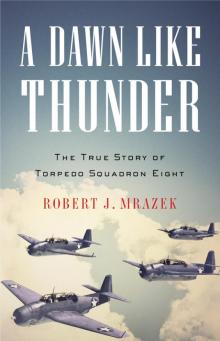 A Dawn Like Thunder
A Dawn Like Thunder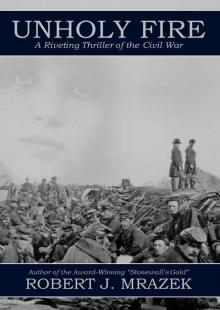 Unholy Fire
Unholy Fire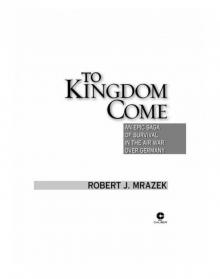 To Kingdom Come
To Kingdom Come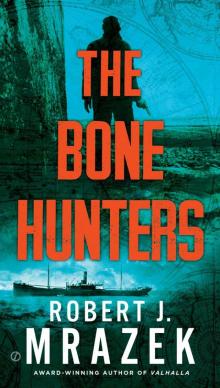 The Bone Hunters
The Bone Hunters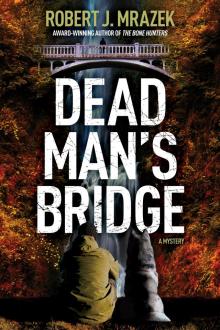 Dead Man's Bridge
Dead Man's Bridge